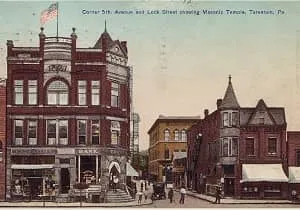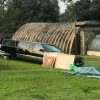Tarentum
Tarentum is a borough in Allegheny County, Pennsylvania, 22 miles (35 km) northeast of Pittsburgh. It stretches along the west bank of the Allegheny River. Tarentum, known initially as "Chartiers Old Town," was named after the ancient Greek city-state of Taranto, located on the eastern coast of the Italian peninsula.
Formerly, Tarentum was an industrial center that produced plate glass and bottles. Other Tarentum-based companies produced bricks, lumber, steel and iron novelties, steel billets and sheets, sacks, and wrapping paper.
Tarentum dates from 1752 when a trading post was built at Bull Creek. The community was named for the ancient Roman seaport and was incorporated as a borough in 1841. Judge Henry Marie Brackenridge founded Tarentum in 1829 when the Pennsylvania Canal was completed between Philadelphia and Pittsburgh.
By 1841, there were twenty-six states in the Union, and the population of Tarentum had increased to more than 300, enough to permit incorporation as a borough. A petition of 47 freeholders to the Allegheny County quarter session court judge in July 1841 was successful, and a charter was granted on March 7, 1842. Some of the names on this crucial petition were George Gettys, Nathaniel Randolph, Jesse Evans, A. W. Lane, John Boge, John Truby, Joshua Barthholic, James Fulton, and Felix Negley. Tarentum became the third incorporated borough in Allegheny County.
In 1900, 5472 people lived here; in 1910, 7414, and 1940, 9,846 people lived in Tarentum. The population was 4,993 at the 2000 census.



